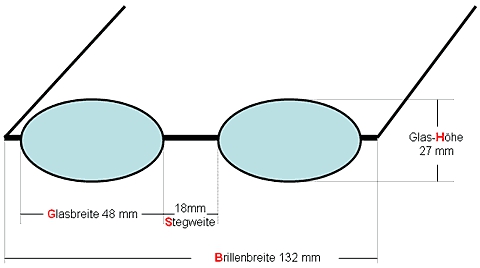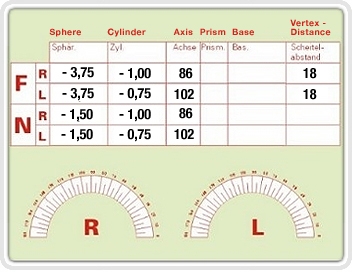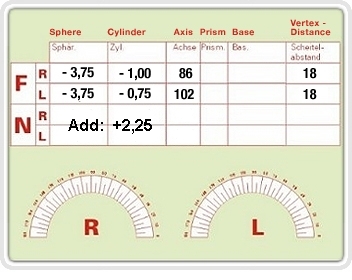Frequently asked questions
On this page you will find answers to frequently asked questions about Optikplus GmbH, our online shop and the ordering process. If you cannot find the answer to your question(s) here, please contact us by e-mail or telephone.
General questions
Navigate via the product categories at the top or via the search function to the product you want. Enter the order values and the quantity and click on add to cart.
The product is then placed in the shopping cart. After clicking on "Continue order" you can order the same product again with different order values (e.g. strength or BC value) or navigate to another product and add it to the shopping cart.
To get to the shopping cart view, please click on to the shopping cart or on the shopping cart symbol (shopping bag) in the upper right corner.
All products that are in the shopping cart will then be displayed. They can then still be edited. The number of pieces can be changed or products can be deleted.
Coupon codes can also be entered on this page. Then please click continue to the next step
You will then have the option to open a new customer account or, if you are already registered, to enter your log-in details. However, it is also possible to proceed without registration.
You then only need to enter your address details and you can immediately complete your order. Please note: Once you have registered, it is no longer possible to place an order under the same email address without registering.
After entering your address data and a possibly different delivery address, you only have to select the desired payment method. Before the ordering process is completed, you can check the information provided at your leisure and change it if necessary.
Input error correction
At any time during the ordering process, input errors can still be corrected.
Simply click on the order step to be changed in the overview line. All input data can then be changed.
Only after clicking on Order for payment in the last order step, the order is finally sent and can no longer be changed online.
The store system allows you to search by product name, by product groups, by item numbers, as well as by the total offer of each manufacturer.
In addition, you have the option to search contact lenses by specific material properties.
For example, enter biocompatible or silicone.
All lens types made of biocompatible materials or silicone hydrogel material are then displayed. Or enter Ocufilcon. ( You will find the material designation on the lens package ). All lenses made from this material will then be displayed.
We grant a statutory right of return within 14 days after delivery.
Please note that unsealed or damaged goods cannot be returned.
In case of wrong delivery, please be sure to call us before returning the goods.
Tel. +49-711-48 68 68
We then try as quickly as possible to bring the right goods on the way. As a rule, we enclose stamps or a "freeway parcel stamp" with the replacement delivery for the free return of the incorrectly delivered products.
For returns, please always fill out the returns slip that is included with each order.
Products made especially for you, such as annual lenses, hard contact lenses or other custom-made contact lenses, can only be returned in case of obvious quality defects.
For all returns free of charge according to the right of withdrawal, you will receive a parcel value stamp from us, with which you can return the goods to us free of charge from any DHL acceptance point (post office or DHL service point). Please avoid unfree returns.
Request a free parcel value stamp by calling:
+49-711-486868.
You can also print the parcel stamp directly online. To do so, please click on this Link and enter your customer number and address details. You can then save the form as a PDF and print it out. You then only need to stick the printout on your parcel and hand it in at a DHL acceptance point of your choice.
The radius of curvature (BC, BK, ro) indicates the curvature of the inner surface of the contact lens in mm. The larger this value, the flatter the lens. The radius of curvature of the lens depends on the curvature of the corneal surface. However, the fit also depends on the diameter and on the strength of the lens material.
Strength:The power (SPH, PWR, P., DPT, F`v , D) indicates the optical effect of your contact lenses in diopters (D, dpt). Please pay attention to the sign ( minus or plus ).
Cylinder + axis:For toric contact lenses for astigmatism, the cylinder (Cyl., Zyl.) and the axis (Axis, AX, A, T) are additionally indicated with values between 0 and 180°. For some lens types, the cylinder value and axis are only separated by an "x" ( 1.25x090 ). This means that the cylinder value is -1.75 and the axis value is 90.
DIA:The diameter (DIA, DM, øT) indicates the size of the contact lens in millimeters.
Addition:In the case of multifocal contact lenses for presbyopia, the addition (Add) is also indicated for some lens types. The addition can be indicated with a numerical value such as +1.50 or with a word such as "low" or "high".
Exc.:Eccentricity indicates the degree of edge flattening in hard contact lenses with an elliptical back surface shape.
LOT number:The LOT number indicates in which production batch a certain packaging unit was produced. It is used for quality control and does not have to be specified in an order.
Indicates the official material designation. It must be indicated on each contact lens package and can be used to identify a lens sold under different brand names. You can enter the material designation in the "Search field" at the top left. All lens types made of this material will then be listed.
Material type:This field appears when the lens material has special properties.
E.g:
HEMA for the classic, first soft lens material, which was only slightly gas permeable but quite comfortable
MMA for material with medium water content and medium DK value (not biocompatible)
MMA/VP material with high water content and relatively high gas permeability (not biocompatible)
Biocompatible for particularly compatible materials that are not perceived by the body as foreign and are therefore better tolerated, form fewer deposits and dry out less quickly.
Silicone hydrogel for materials of the latest generation with low water content and yet enormous acid permeability. Some of these lenses ( DK < 100 ) can be worn continuously for several days after consultation with the fitter, as they hardly tend to dry out and supply the eye with sufficient oxygen even when the eyelids are closed.
Water content:Indicates the percentage of water in a soft contact lens. In general, the higher the water content of a contact lens, the better the oxygen permeability of the lens material. Contact lenses with good oxygen permeability (Dk value) are therefore particularly suitable for longer periods of wear. Contact lenses with high water content also have disadvantages. They are usually not as stable as lenses with low water content and are more prone to deposits.
In the case of dry eyes, contact lenses with a high water content can cause wearing problems, as they absorb the natural water supply (tear film) of the eyes like a "sponge" and can "dry out" the eyes. In such cases, lenses made of so-called bionic (biocompatible) material with medium water retention and high water binding capacity are a good choice.
The new materials with silicone content are even more effective. Despite a very low water content, they have a much higher oxygen permeability than conventional lens materials.
DK value (DK/T value)This numerical value indicates the oxygen permeability of a lens material independent of the center thickness (DK value). The higher the value, the greater the oxygen permeability. Manufacturers often specify the so-called DK/T value, which still takes into account the center thickness of the lens. Thus, the DK/T value of a lens made of the same material is greater with a smaller center thickness. Do not be confused by this numerical value. In practice, the order of magnitude is more important than the exact number. Here is a rough overview:
DK (DK/T) < 20 low oxygen permeability (HEMA material)
DK (DK/T) = 20-50 medium oxygen permeability (biocompatible materials)
DK (DK/T) > 60-150 high to highest oxygen permeability (silicone hydrogel material)
Color type:Color intensifying = the eye color cannot be changed, only intensified. This type of lens is especially suitable for light eyes. Brown eyes cannot be changed. Shading of the pupil takes place only to a small extent.
Color-changing = the color layer of the lens covers the iris to a large extent. These lenses can also change the color of dark eyes. This type of lens is not suitable for driving at night due to the partial shading of the pupil.
Modulus:Modulus (material elasticity) is a measure of the stiffness or elasticity of a material. In the case of contact lenses, it is a measure of how well the lens fits the eye and how comfortable it is to wear. The lower the modulus value, the softer the material. The modulus value is usually only given for silicone hydrogel lenses. An extremely high oxygen permeability (DK value > 120) requires a higher modulus, which can limit the wearing comfort when changing from a softer material in the first days of wearing.
Storage area:Indicates the strength range within which we have a concat lens in stock. The delivery time is then correspondingly shorter than if we first have to request the lens from the manufacturer.

Example of a prescription for glasses

F = Distance ( decisive values for distance glasses )
N = Proximity ( Decisive values for reading glasses )
The Sphere column indicates the diopter value of the lens.
Minus(-) for myopia and plus(+) for hyperopia. If no sign is given, it always means plus(+)
In der Spalte Zylinder ist der Wert der Hornhautverkrümmung ( Astigmatismus ) angegeben. Wenn kein Astigmatismus vorliegt, bleibt dieses Feld im Rezept leer. Wählen Sie dann im Bestellformular bitte "0,00 kein Zyl." ein.
Die Spalte Achse gibt die Lage des Astigmatismus in Grad an.
Wenn kein Astigmatismus vorliegt, bleibt auch dieses Feld im Rezept leer. Tragen Sie dann im Bestellformular bitte den Wert " keine Achse " ein.
Der Scheitelabstand gibt die Entfernung des Glases zur Hornhaut an. Er braucht bei einer Bestellung nicht angegeben zu werden.
Wenn im Feld Prisma Werte eingetragen sind, können Sie nicht online bestellen.
Es liegt dann eine Winkelfehlsichtigkeit vor. In diesen, etwas komplizierteren Fällen, sollten Sie sich an Ihren Optiker vor Ort wenden.
Das Feld ADD (Addition) erscheint nur bei Mehrstärkengläsern (Gleitsichtgläsern). Tragen sie hier die Differenz zwischen den Sphärenwerten von Ferne und Nähe ein. Es ist praktisch immer für rechtes und linkes Auge gleich.Oft wird die Addition auch gleich auf dem Brillenrezept angegeben (siehe zweites Rezeptbeispiel unten).
Die PD (Pupillendistanz) gibt die Entfernung der Pupille von der Mitte der Nasenwurzel in Millimetern an. Sie wird in einem Brillenrezept in der Regel nicht angegeben. Sie können Sie aber oft in Brillenpässen finden. Die Angaben sind entweder für rechtes und linkes Auge getrennt angegeben ( z.Bsp: 32,5-31,5 ) oder als Gesamt-PD ( Abstand der beiden Pupillenmitten in Millimeter )
Einen PD-Maßstab zum ausdrucken finden Sie hier.
Voriges Beispiel in anderer Schreibweise:

Oftmals werden die Werte für die Nähe nicht einzeln angegeben, sondern nur als Nahzusatz ( Addition ) zum Fernwert. Für die Bestellung einer Lesebrille muß dann zur Sphäre des Fernwertes die Addition dazugezählt werden. Zylinder und Achse ändern sich nicht.
Beispiel:
Nahwert rechts:
Sphäre: = -3,75 + 2,25 = -1,50
Zylinder = -1,00
Achse = 86
Nahwert links:
Sphäre: = -3,75 + 2,25 =-1,50
Zylinder =-0,75
Achse =102
For contact lenses, the delivery time is often strength-dependent.
Common values of daily and monthly lenses we have in stock many times.
The stock range indicates within which power range we have the lens type in stock. The delivery time is then 1-3 working days.
Lenses outside the specified range have a delivery time of approximately 3-6 working days.
The stated delivery times, can also deviate once in individual cases. If it takes significantly longer than indicated, inform you by email. Please call us in very urgent cases, whether the desired lens is also guaranteed to be available. (Tel. 0711-486868)
Rarely needed values such as high MINUS values or PLUS values as well as annual lenses, colored lenses, toric lenses, multifocal lenses, hard lenses and lenses outside the stock range usually have a delivery time of 3 - 6 days. In exceptional cases, custom-made lenses may require up to 14 days.


 Service / Help
Service / Help
 Contact
Contact
 0711 486868
0711 486868




 Quick
Quick




